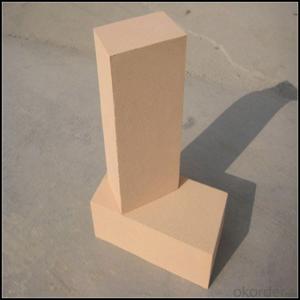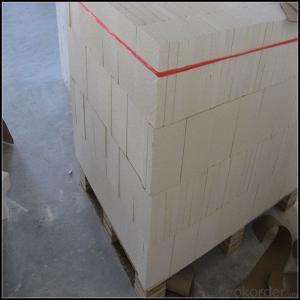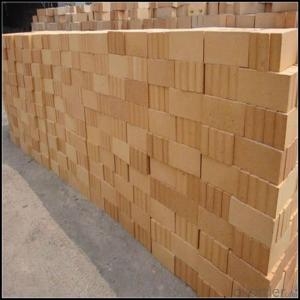Fire Bricks|Refractory Bricks Manufacturer
- Loading Port:
- China main port
- Payment Terms:
- TT OR LC
- Min Order Qty:
- 2 m.t
- Supply Capability:
- 800 m.t/month
OKorder Service Pledge
OKorder Financial Service
You Might Also Like
Refractory Brick
CMAX firebricks are classified under temperature between 1300℃ to 1700℃, manufactured from high purity alumina clay by mixing, press-forming, drying, sintering and machining. Bricks contain carefully-graded organic fillers which are burned out during sintering to give a uniform controllable pore structure. This technique makes product feature low thermal conductivity and excellent heat insulation

Features
1. The dimensions are more exactly.
2. Low iron content and impurities
3. Good thermal stability;
4. High refractoriness,
5. anti alkaline /acid erosions,
6. Mechanical and chemical properties are very good.
7. Strong thermal shock resistance.
Application
1.Carbon bake furnaces in the aluminium industry
2.Preheat zones and cyclones of rotary cement kilns
3.Insulation for glass tanks
4.Coke ovens
5.Blast furnaces
6.Reheating furnaces
7.Suspended roofs
8.Lime kilns
9.chimney
Data Sheet
Classification Temperature (℉/℃) | 3000/1650 |
Bulk Density (g/cm3 ) | ≤1.0 |
Thermal Conductivity | |
800℃, W/m.K | ≤0.39 |
1000℃, W/m.K | ≤0.43 |
1200℃, W/m.K | ≤0.48 |
Reheating Linear Change (%) | 1550℃×12h |
≤0.9 | |
Chemical Composition (%) | |
Al2O3 | ≥75 |
Fe2O3 | ≤0.5 |
Packaging & Shipping
Packaging Details:Be packed in fumigated wooden pallets
Delivery Detail: 30 days after order

Our Services
Optimum solution and product supply of refractories for high temperature industries, such as iron steel, non-ferrous, petrochemical and building materials.
Engineering design, contract and consult for refractories, and civil architecture design.
Research, development, manufacture and sale of superhard materials.
R&D, manufacture and sale of special packing materials for export.
Inspection, supervision and arbitration of refractories.
Consultation and services in refractories information.
Training and cultivation of high-level talents in refractories profession
Timely response to your inquiry, multiple choice recommendations based on your demand,quickly respond mails and provide solutions.
Sample and trial order are accepted for the quality evaluation
Arrange production on time and control quality strictly.
Book the earliest vessel or plane to guarantee the delivery time.
Provide all the detailed news and pictures from order to delivery;
Offer relative export documents and original certificate if needed;
Warm and considerable after-sale service
Sales Network

Company Information
CNBM (China National Building Material) Group is the largest comprehensive building materials group in China that in integrate scientific research, manufacturing and logistics into one entity. The largest building materials and equipment specialists in China. Upon State Council approval, today CNBM owned more than 300 subordinate manufacturing factories and servicing companies. There are 6 fully owned public listed companies and 11 partially owned with substantial shares public listed companies. In many of these fields, CNBM is playing the leading role in the building industry in the country.
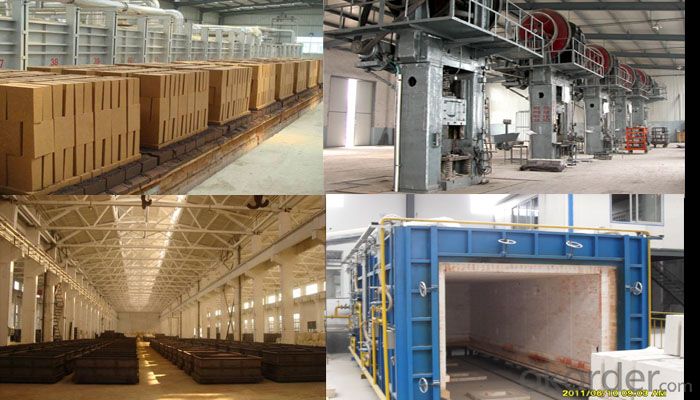
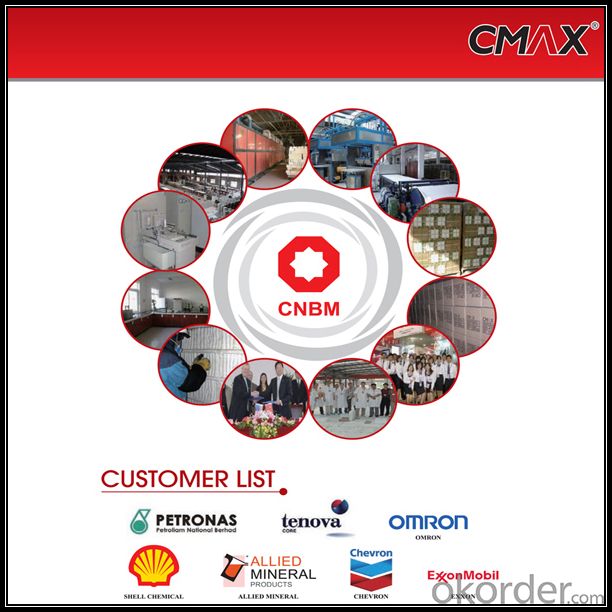
FAQ
1. Which products do you have?
We have all kinds of refractory brick, castable, mortar, cement, ceramic fiber products, etc.
Or you could browse our products to choose what you need.
2. Can you give me a brief introduction of the application of your products?
We are mainly specializing in the refractory materials in iron and steel, cement, glass, ceramics, petrochemical, electric power Industry, etc.
3. If I need your offer, what information do you need?
In order to choose suitable products, it will be appreciated to provide us the information, such us specification, technical data, order quantity, products application etc. If any question, please contact us freely.
- Q:Are insulating fire bricks resistant to gas permeability?
- Insulating fire bricks possess gas impermeability, as they are engineered with low porosity and high density. These bricks are crafted from superior refractory materials like clay or silica and undergo a unique manufacturing process that guarantees minimal pore size and compactness. Consequently, they excel at containing gases and averting leakage. Widely employed in high-temperature settings such as furnaces, kilns, and industrial boilers, insulating fire bricks play a critical role in ensuring efficient and safe operations by maintaining gas tightness.
- Q:Can insulating fire bricks be used in thermal oxidizers?
- Yes, insulating fire bricks can be used in thermal oxidizers. These bricks are designed to withstand high temperatures and provide excellent insulation, making them suitable for use in thermal oxidizer units. They help to maintain and distribute heat evenly, enhancing the efficiency and performance of the thermal oxidizer system.
- Q:Are insulating fire bricks resistant to acid attack?
- Yes, insulating fire bricks are resistant to acid attack.
- Q:Clay insulation bricks insulation, brick and ordinary clay brick, fireclay, brick distinction, and its use? Thank you
- The insulation brick integrates the excellent heat preservation effect into the wall while building the wall. Low thermal conductivity, high strength, durable, lightweight, simple construction, easy handling, economy, green environmental protection, sound insulation, fire protection etc..
- Q:Is it necessary to use mortar when installing insulating fire bricks?
- Yes, it is necessary to use mortar when installing insulating fire bricks. Mortar acts as a bonding agent between the bricks, ensuring stability and preventing heat loss. It also helps to seal any gaps or cracks, enhancing the insulation properties of the bricks.
- Q:Are insulating fire bricks suitable for use in thermal power plants?
- Yes, insulating fire bricks are suitable for use in thermal power plants. Insulating fire bricks are designed to have low thermal conductivity, which means they can effectively retain heat and prevent heat loss. In thermal power plants, where high temperatures are generated, insulating fire bricks can be used as linings for furnaces, boilers, and other equipment to provide thermal insulation and increase energy efficiency. Additionally, these bricks are resistant to high temperatures and can withstand thermal shocks, making them ideal for use in environments with extreme heat. By using insulating fire bricks in thermal power plants, operators can reduce heat loss, increase the overall efficiency of the plant, and improve the durability and lifespan of the equipment.
- Q:How do insulating fire bricks provide insulation against heat transfer?
- The provision of insulation against heat transfer is a function of the composition and structure of insulating fire bricks. These bricks are fabricated from lightweight refractory materials like clay, alumina, or silica, which possess exceptional thermal insulating properties. To minimize the transfer of heat, the structure of insulating fire bricks is designed in such a way that it reduces the flow of heat. Typically, a large number of air pockets or voids are incorporated into the bricks, acting as insulating barriers. These voids decrease the density of the bricks, resulting in lighter bricks that conduct less heat. Furthermore, insulating fire bricks exhibit low thermal conductivity, indicating their inability to conduct heat effectively. This characteristic is attained by employing materials with low thermal conductivity and incorporating insulating additives during the manufacturing process. Consequently, the bricks are capable of impeding the transfer of heat from one side to the other. Moreover, insulating fire bricks possess a high melting point, enabling them to endure exceedingly high temperatures without compromising their insulating properties. As a result, they are well-suited for applications requiring heat insulation, such as kilns, furnaces, and fireplaces. In summary, insulating fire bricks effectively provide insulation against heat transfer by virtue of their lightweight composition, structural design featuring air pockets, low thermal conductivity, and high melting point. These properties make them highly effective in minimizing heat flow and maintaining temperature stability across a range of heating applications.
- Q:Can insulating fire bricks be used in the construction of smelting furnaces?
- Smelting furnaces can indeed utilize insulating fire bricks in their construction. These bricks have been specifically crafted to endure extreme temperatures and offer exceptional insulation, rendering them an impeccable choice for smelting furnaces. Their low thermal conductivity aids in minimizing heat dissipation and upholding a steady temperature within the furnace. Moreover, these bricks are lightweight, which facilitates their handling and installation. All in all, incorporating insulating fire bricks in the construction of smelting furnaces can enhance energy efficiency, diminish operational expenses, and elevate the overall furnace performance.
- Q:How do insulating fire bricks affect the overall insulation properties of a structure?
- Insulating fire bricks play a vital role in enhancing the insulation properties of a structure. These bricks are specifically designed to have low thermal conductivity, enabling them to effectively resist heat transfer. Consequently, they act as a barrier, preventing heat from escaping during cold weather and blocking external heat intrusion during hot weather. The utilization of insulating fire bricks significantly improves the overall thermal insulation of a structure. These bricks possess high porosity and low density, allowing them to trap air within their structure. This trapped air acts as an exceptional insulator, creating a thermal barrier that minimizes heat transfer through conduction, convection, and radiation. Consequently, the heat loss or gain through the walls, floors, and roofs of a building is notably reduced. Furthermore, insulating fire bricks exhibit excellent refractory properties, enabling them to withstand high temperatures without deforming or deteriorating. This characteristic is crucial in applications where the structure is exposed to extreme heat, such as industrial furnaces or kilns. By maintaining their structural integrity under high temperatures, these bricks ensure that the insulation properties of the structure remain intact even in challenging environments. Overall, the use of insulating fire bricks has a positive impact on the insulation properties of a structure. They effectively reduce heat transfer, conserve energy, and maintain a comfortable indoor environment. Additionally, their durability and resistance to high temperatures make them a dependable choice for insulation in various industrial and residential applications.
- Q:Can insulating fire bricks be used in refractory coatings?
- Yes, insulating fire bricks can be used in refractory coatings. Insulating fire bricks are designed to have low thermal conductivity, which makes them effective for insulating applications. When used in refractory coatings, they can help to reduce heat loss and increase energy efficiency. Additionally, insulating fire bricks are capable of withstanding high temperatures, making them suitable for use in refractory coatings that are exposed to intense heat. However, it is important to consider the specific requirements and properties of the refractory coating, as well as the intended application, to ensure that insulating fire bricks are the most suitable choice.
1. Manufacturer Overview |
|
|---|---|
| Location | |
| Year Established | |
| Annual Output Value | |
| Main Markets | |
| Company Certifications | |
2. Manufacturer Certificates |
|
|---|---|
| a) Certification Name | |
| Range | |
| Reference | |
| Validity Period | |
3. Manufacturer Capability |
|
|---|---|
| a)Trade Capacity | |
| Nearest Port | |
| Export Percentage | |
| No.of Employees in Trade Department | |
| Language Spoken: | |
| b)Factory Information | |
| Factory Size: | |
| No. of Production Lines | |
| Contract Manufacturing | |
| Product Price Range | |
Send your message to us
Fire Bricks|Refractory Bricks Manufacturer
- Loading Port:
- China main port
- Payment Terms:
- TT OR LC
- Min Order Qty:
- 2 m.t
- Supply Capability:
- 800 m.t/month
OKorder Service Pledge
OKorder Financial Service
Similar products
New products
Hot products
Related keywords
